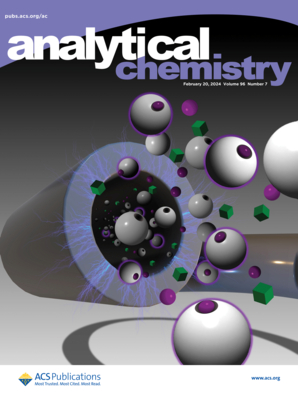Multimodal Optical Imaging Combined with Radiomic Analysis for Fibrotic Cardiac Tissue Investigation.
IF 6.7
1区 化学
Q1 CHEMISTRY, ANALYTICAL
引用次数: 0
Abstract
Understanding the process of fibrotic scarring of the myocardium is critical for the diagnosis and risk stratification of life-threatening cardiac dysfunction. Complex changes in structure, composition, and conductivity occurring at different stages of fibrogenesis diversify the biomedical characteristics of the myocardium. We present a multimodal optical imaging approach including cardiac optical mapping (COM), optical coherence tomography (OCT), multiphoton microscopy (MPM), and line scan Raman microspectroscopy (LSRM) for multiparametric assessment of the myocardium with radiomic analysis to link electrophysiologic, morphologic, functional, and molecular changes in ischemic cardiac tissue and validate our results with histology. COM is used to map the electrical behavior across myocardial tissue. Second harmonic generation and two-photon excitation fluorescence imaging as MPM techniques provide additional unique contrast of collagen, the extracellular matrix, and cardiac cells, such as cardiomyocytes playing a critical role in cardiac fibrosis. Our machine learning model based on radiomic features extracted from MPM data addresses the need for automated fast high-throughput classification between healthy and pathologic cardiac tissues and achieved an accuracy of 0.99. In addition, LSRM assesses the molecular contrast and is used to evaluate the development stage of fibrotic scarring and multiclass classification by utilizing partial least-squares discriminant analysis, achieving sensitivity and specificity values of 0.94. OCT is used for fast navigation through the sample, for intermodal referencing, and easy coregistration between the complementary imaging techniques operating at different fields of view and resolutions ranging from cm2 down to μm2.多模态光学成像联合放射组学分析在纤维化心脏组织研究中的应用。
了解心肌纤维化瘢痕形成的过程对危及生命的心功能障碍的诊断和风险分层至关重要。在纤维形成的不同阶段发生的结构、组成和电导率的复杂变化使心肌的生物医学特征多样化。我们提出了一种多模态光学成像方法,包括心脏光学测绘(COM)、光学相干断层扫描(OCT)、多光子显微镜(MPM)和线扫描拉曼显微光谱(LSRM),通过放射学分析对心肌进行多参数评估,将缺血心脏组织的电生理、形态、功能和分子变化联系起来,并通过组织学验证我们的结果。COM用于绘制心肌组织的电行为图。二次谐波产生和双光子激发荧光成像作为MPM技术提供了胶原蛋白、细胞外基质和心脏细胞(如在心脏纤维化中起关键作用的心肌细胞)的额外独特对比。我们的机器学习模型基于从MPM数据中提取的放射学特征,解决了健康和病理心脏组织之间自动快速高通量分类的需求,并实现了0.99的准确率。此外,LSRM评估分子对比,并利用偏最小二乘判别分析评估纤维化瘢痕的发展阶段和多类别分类,灵敏度和特异性均为0.94。OCT用于快速导航样品,用于多式参考,以及在不同视场和分辨率范围从cm2到μm2的互补成像技术之间的轻松共配准。
本文章由计算机程序翻译,如有差异,请以英文原文为准。
求助全文
约1分钟内获得全文
求助全文
来源期刊

Analytical Chemistry
化学-分析化学
CiteScore
12.10
自引率
12.20%
发文量
1949
审稿时长
1.4 months
期刊介绍:
Analytical Chemistry, a peer-reviewed research journal, focuses on disseminating new and original knowledge across all branches of analytical chemistry. Fundamental articles may explore general principles of chemical measurement science and need not directly address existing or potential analytical methodology. They can be entirely theoretical or report experimental results. Contributions may cover various phases of analytical operations, including sampling, bioanalysis, electrochemistry, mass spectrometry, microscale and nanoscale systems, environmental analysis, separations, spectroscopy, chemical reactions and selectivity, instrumentation, imaging, surface analysis, and data processing. Papers discussing known analytical methods should present a significant, original application of the method, a notable improvement, or results on an important analyte.
 求助内容:
求助内容: 应助结果提醒方式:
应助结果提醒方式:


